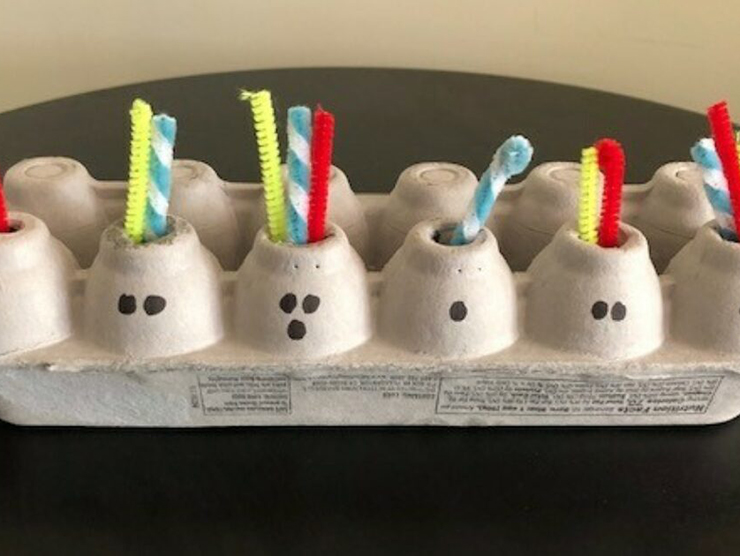The Benefits of Pretend Play
Pretend play has so many benefits. Through play, young children develop language and social-emotional skills. They learn to assign parts, ask questions, take turns, and share. Children use their imagination as they invent new uses for materials or create stories. Imagination not only allows for more innovation, but it builds resilience. When we can think creatively, we can imagine our way out of difficult spots – we can imagine a better world. We can have hope and find solutions. Children can try on roles to see how it feels to do something. They learn to negotiate differences and come to compromise. All of this learning is naturally embedded in meaningful and purposeful activity.
Pretend Play Experiences for Children
Spark creative play with these pretend play activities:
- Provide “loose parts” in combination with some of your child’s toys. Fabric scraps, for example, turn into clothes, blankets, or homes for stuffed animals. Empty spools of thread transform into food to accompany an impromptu picnic.
- Bring along baskets with handles or a canvas bag next time you go outside or take a walk, so your child can collect items of interest along the way. Allow these to come home with you and add them to the toy shelf in an appealing container. Children may pull these out to use when building with blocks or playing with dolls, or on the spur of the moment to improvise for a needed item.
- When possible, allow your child to use non-plastic dishes in their imaginative play. The feel of “regular” dishes is more substantial. This may feel risky at first, and take some guidance on your part for success. Perhaps start with a time you both can play together, so you can model how to carry and hold the dishes, and together make a plan for how the dishes are stored. There may be an occasional broken dish, but children quickly learn to appreciate and care for real items.
- Engage your child in real-life clean up tasks. Set aside a broom and dustpan just for their use. Real-life, smaller sized brooms, available at many stores, are just the right size for young children. Real gardening shovels make it easier to dig through dirt and sand than a flimsy plastic toy.
- Compile a collection of small boxes of all different sizes and shapes. Allow your child to explore with these to see how they use them.
The value of allowing children to use real materials rather than replicas has a long history. Before children played with commercially created items, they used what was around their homes or collected items to re-purpose into a variety of play items. The value of these experiences and the importance of pretend play has not diminished over time.
These materials have a few elements that add to their appeal. They are open-ended in purpose; they have a realistic weight and heft and feel substantial in a child’s hand; and they are the same materials that children see adults using. When children engage with these materials, their play becomes richer and more meaningful.





